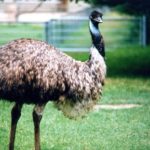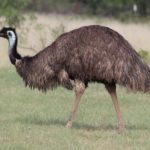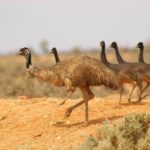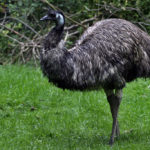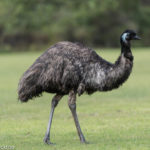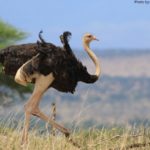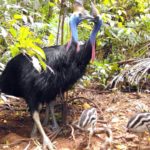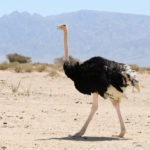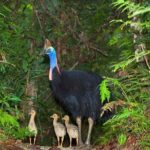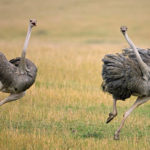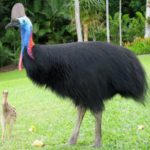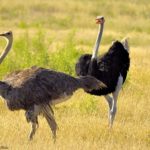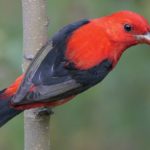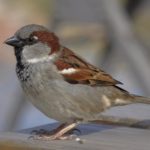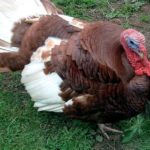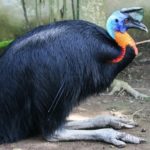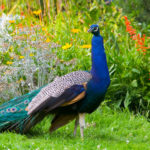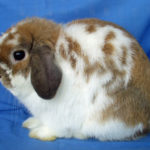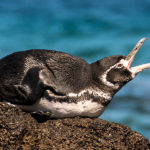Emus – information
 The Australian ostrich emu very much resembles an African ostrich. It is because of their striking similarity, emu for quite some time attributed to the species of ostriches. However, this opinion is erroneous, since it has already been proved that this bird is closer to the cassowary and is one of the species of the emu family in the order of cassowaries. Thus, to the African ostrich, except for a small external similarity, the Australian emu has nothing to do with. It’s a completely different bird.
The Australian ostrich emu very much resembles an African ostrich. It is because of their striking similarity, emu for quite some time attributed to the species of ostriches. However, this opinion is erroneous, since it has already been proved that this bird is closer to the cassowary and is one of the species of the emu family in the order of cassowaries. Thus, to the African ostrich, except for a small external similarity, the Australian emu has nothing to do with. It’s a completely different bird.
The wings of the emu are not quite ordinary, they are like many non-flying birds underdeveloped. Wings have a length of about 25 centimeters, and at the end of each wing is a small claw.
But emu has rather developed legs, which are devoid of feathering, with three clawed fingers on each. Sharp claws allow you to fight with rivals in the mating season, and also fight off numerous enemies. During the run, emu can do just giant steps – longer than 2.5 meters.
Nomadic way of life, which emu emus lead, allows them for a day to overcome very significant distances in the search for food. The method of nutrition is quite curious: for grinding food, emu, as well as the African ostrich, swallows pebbles, glass and even small pieces of metal. Birds drink quite rarely, but if there is a possibility, they do not deny themselves the pleasure of drinking and sitting in the water.
The emu has excellent eyesight and excellent hearing. Approaching the danger, they can notice a few hundred meters and prevent rapprochement with dangerous predators, as well as with people. If the collision is not avoided, very strong paws are used as a means of protection.
Keep emu always in small groups, for 5-6 individuals. But there are also birds that prefer a single way of life. Samples and males are not easy to distinguish. They have the same plumage, which has the property to vary depending on the range of air temperature. The special structure of feathers protects from overheating, so the emu emu easily tolerate even the most intense heat.
The main responsibility of the female is only in the deposition of eggs. After that, the male self-improvement of the nest, making it cozy for future chicks. Emu jacks are located in a well, on a well-viewed terrain. At a time, the female lays 7-9 fairly large eggs, reaching in weight from 800 to 1000 grams. The male emus incubates and protects the eggs for 65 days without parting with them literally for a minute.
During the entire period of incubation, he practically does not feed and survives thanks to the deferred fat reserve. After the long-awaited hatching of the chicks, the male emu carefully takes them with him and protects him in every possible way. Pooh, covered with chicks – striped. Chicks reach full development almost to two years.

